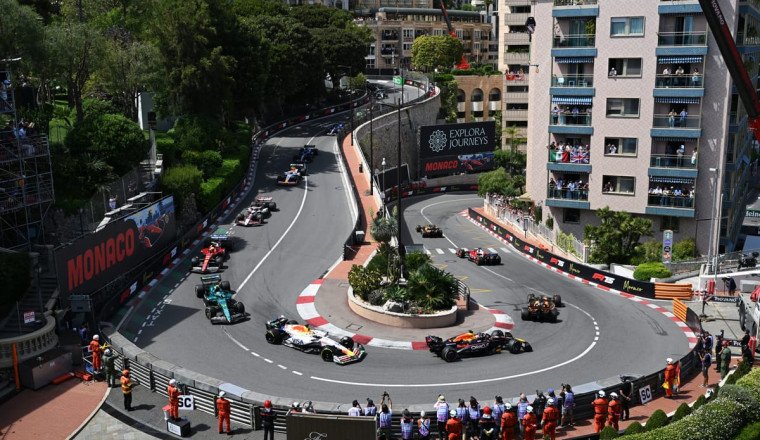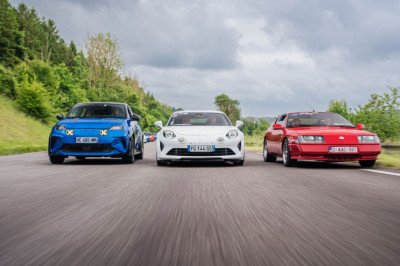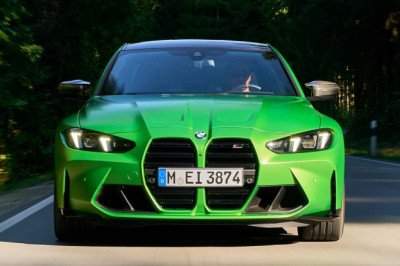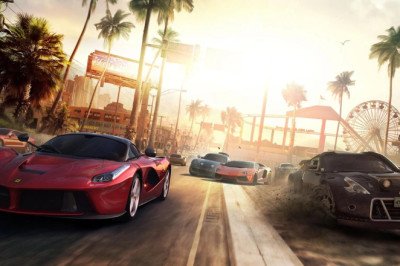
It may not have seemed it at the time, but the chaotic team games that overshadowed Formula 1's Monaco Grand Prix were not spur of the moment strategy gambles thrown out there in the hope of pulling off a shock.
Instead, what Racing Bulls first unleashed that then forced the hands of Williams and Mercedes to do the same later on, was a logical plan that was a preferred option from the off.
While many had thought in the build-up to the Monaco GP that alternative strategies to win it would focus mainly on pitting on lap one to cycle through stops early in the hope of the pack being bunched up later (as some cars did) or running right to the end before final stops in the hope of a late red flag (as Max Verstappen did), there was actually one way to game things even more.
It was not pretty but, on a track where overtaking is so difficult, it was effective: use your second car as a roadblock.
As Racing Bulls' strategists got to work on plotting how best to approach the Monaco GP, this roadblock tactic started shuffling up the order of preference.
Some circumstances needed to fall into play for it to happen: the teams' drivers needed to be running quite close to each other and at a decent pace where the car ahead was able to get a move on.
But if that happened then the second car could then act as the buffer to everyone behind; effectively backing off and holding everybody up so a nice gap opened up on the track in front of them.
This would then allow the lead driver to drop into that gap after their pitstop. Once there, you swap positions, allow the second car to get its free pitstop. Then rinse and repeat the process.
As Racing Bulls team principal Laurent Mekies said, the idea was firmly on the table before Monaco and it got hardened up immediately once Isack Hadjar and Liam Lawson qualified relatively close to each other in fifth and ninth on the grid.
"It was certainly one of the preferred strategies," Mekies told The Race. "The guys have been doing a very, very good job already in the past few weeks when they dug into the Monaco uniqueness with these new regulations.
"They saw that there were quite a lot of opportunities based on where your cars would be qualifying to play some teamwork.
"Then obviously Isack and Liam ended up in qualifying to put the cars up there and it opened a bit more options to do something clever.
"So yes, it was one of the preferred options already on Saturday night and Sunday morning when preparing for the race."
The strategy still required some circumstances outside of Racing Bulls' hands to pull it off.
It needed the frontrunners to have some decent pace, because if leader Lando Norris was backing up the pack himself then it would not work.
Racing Bulls also decided that it would not be worrying about what the penalised Lewis Hamilton behind Hadjar would do as it feared if it obsessed over the Ferrari rather than its more likely competition it could end up losing out to its actual main rivals.
Better to focus on its plan and guarantee a set points finish than risk everything to beat Hamilton and face the danger of throwing everything away.
The plan also needed both drivers to buy into it, with the team well aware that Lawson backing off not only derailed his chances of moving forward but left him exposed to other cars potentially undercutting him.
Mekies added: "The biggest element of it was the teamwork spirit, how Liam in this case put himself forward for the sacrifice, and with no strong guarantee that we could pay him back with some good points.
"There were win-win scenarios, which ultimately was the one we have been able to execute. But there were less happy scenarios, potentially."
And one of those less happy scenarios was having a whole bunch of cars get past Lawson when he pitted and leave him outside the points totally.
"Actually we did not send him dreams this morning," explained Mekies. "We told him there were very significant risks that it could go south.
"But again, that's the luck we have here. There are team players, the crews, the engineers, we all went into it thinking, if given the chance, what was the best possibility to get as many points as possible for the team.
"Then when we saw the opportunity. The guys were very, very sharp at communicating it to the drivers, and the drivers were incredible to react to it and controlling it at the exact pace we needed to create this gap and slot into the small windows left by our competitors."
Lawson - running ninth - duly created a 17-second gap to Esteban Ocon's Haas ahead of him in the first 14 laps so that Hadjar could drop into it after his stop, with Lawson holding back an eight-car train headed by the two Williams and two Mercedes.
He then held back again so that Hadjar had room to make his second and final stop just five laps later, effectively securing sixth place for his team-mate.
With Williams and Mercedes not choosing to pit to try an undercut on him, Lawson was still in fairly good shape at this point - out of contention to beat the cars ahead of him but with the same number of pitstops still to do as almost everyone he'd been backing up.
Then the games that began behind him created plenty of space for Lawson to do whatever he and Racing Bulls wanted for the rest of the race with no concerns about being jumped, meaning Lawson still finished eighth despite spending the first quarter of the race as a roadblock.
Once Racing Bulls had pulled its move off, then Williams knew it had to do the same further back to give it any chance of scoring.
It was this which ultimately triggered the wider controversy because it opened the door for frustration from Mercedes' George Russell – who would later benefit himself from similar assistance from team-mate Kimi Antonelli.
As a sidenote, it is understood Mercedes had gone into the weekend pretty set itself on what Racing Bulls and Williams did.
With two quick cars, and potentially starting from the second or third rows, doing that tactic further up the field could have opened the door for victory.
And it says much that Mercedes stuck to its guns in thinking that this strategy was best even starting in the pack – even though it was eventually derailed by hitting a Williams roadblock.
Reaction to Williams's tactics
As Mercedes boss Toto Wolff explained about its strategy choice: "We had quite an interesting discussion [on race] morning on strategy. I said, 'Well, let's do that. Stop early, come out, and then catch up.'
"It's what we did in DTM back in the day, it was fantastic. You stopped. You were last, and then you won the race.
"But the more intelligent people in our strategy group demonstrated to me that that's not going to work here. It [going long and using cars to back others up] was the best strategy.
"And you can see that the ones that went early, [Yuki] Tsunoda, [Ollie] Bearman, it didn't change anything. It wouldn't have scored us points."
The team tactics employed by Racing Bulls, Williams and Mercedes did not sit well with fans, nor many of their rivals who had their afternoons wrecked by getting trapped behind the roadblocks.
Haas team boss Ayao Komatsu, who saw Bearman's hopes of pulling off a charge into the points from the back derailed by the games Williams played, did not like how much things were being manipulated.
He told The Race: "It is very difficult to manage with this new regulation, with everyone playing games. It is what we expected, but to be honest it was even more than what we expected from some people.
"I don't know what you thought of the show, but to me, I don't like it. I think it's totally rubbish. I thought it was actually worse than last year. Yes, something happened, but it's not racing."
Equally, despite his unhappiness at the situation, he admitted he would have done the same thing had the opportunity been available.
"We'd have done exactly what RB did, of course we would," he said. "But I mean, what Mercedes did? Outside the points? Really? Really?
"What RB did of course I would do exactly the same. I'm not complaining about that. I don't mind. Do whatever, I'd have done exactly the same. But if you look at it as a sport, is that racing? I don't think it's racing."
While the Monaco team games have stirred up some controversy, Mekies thinks things need to be put in context.
And what is especially true is that memories are short and we have to recall that 12 months ago, without the two-stop rule, Monaco produced one of the most boring spectacles it has done in years.
Had this year's event played out with the same regulations as 2024 then it was unlikely to have thrown up as much interest – with pole position man Norris likely controlling the pack from the front throughout.
Mekies explained: "We came last year from a fairly boring Monaco where we were all lapping far away from optimum for effectively the whole race.
"And I think it is fair to say that none of us at the time at which we voted for this compulsory two-stop anticipated the number of tricks and possibilities that we actually opened up.
"It was not so much the two stops on its own, but the combination of a mandatory two-stop and a track where you could basically not overtake. So probably we had not figured out everything there. Only afterwards it became obvious that there would be possibilities."
This is why Mekies thinks that even with the controversial aspects that occurred, the two-stop element worked.
"Personally, I think it still gives you a lot more excitement in Monte Carlo than otherwise," he said.
"Even if you take away the red flag story from last year, you will still get a one-stop, only driving very slowly, not to give a gap to your competitors. Then rushing to the pit, get out there, then drive as slow as you dare to do.
"So I think it has created a lot of possibilities. And again, based on where team-mates, cars, end up on the grid, it could even present the chance for more.
"So I think it's a good one-off race fix to a very peculiar layout."
While some team bosses such as Wolff want tweaks to be made to remove the ability for teams to game the system, Mekies is not convinced – especially because holding back rivals is something that has been done at other races.
"There have been other races where we have been battling against team-mates and they have been using the slowing down games," he said.
"Obviously, nothing as extreme as what you can do here, but fundamentally the same sporting principle. And I think as a sport, we have agreed that this was acceptable to do, and it's not a Monaco-only situation.
"So it would be overreacting to say once again let's ban team-mate collaborations. I think it really gave us a bit more spice.
"Did it turn Monaco into an overtaking all out race? No. But it certainly gave it a bit more spice.
"I think it had things to watch for and things to discover. And I think overall it was a good call, and it was a positive move for the sport."















Facebook Conversations